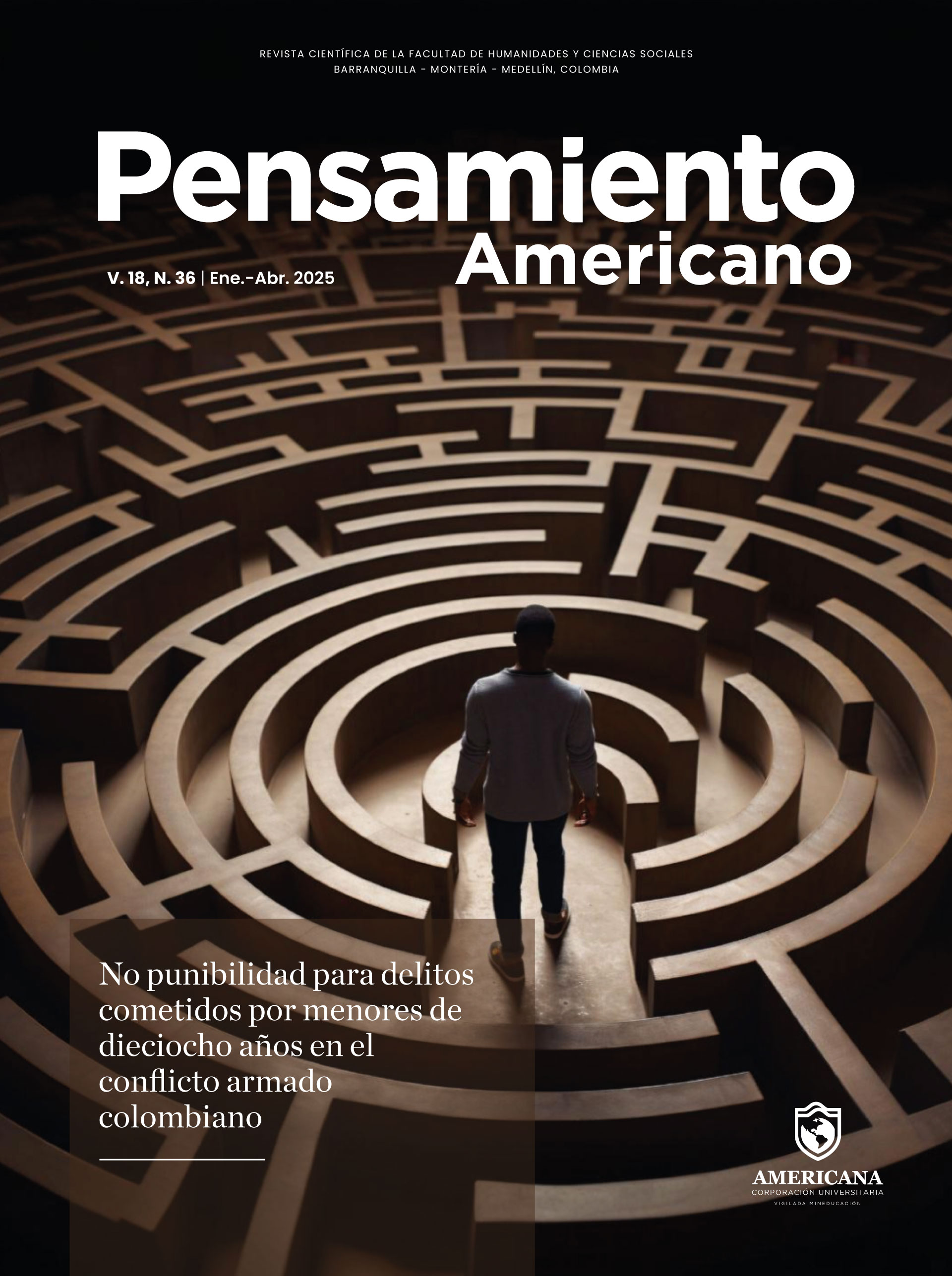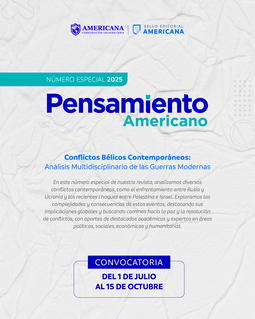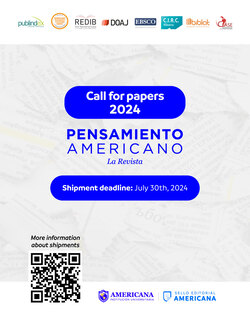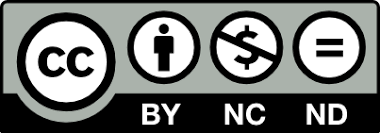Interacciones Cognitivas: La Relación entre la Memoria de Trabajo y la Comprensión Lectora en Niños de Primaria
DOI:
https://doi.org/10.21803/penamer.18.36.873Palabras clave:
Aprendizaje, Comprensión lectora, Memoria de trabajo, NeuropsicologíaResumen
La memoria de trabajo y la comprensión lectora son procesos cognitivos esenciales para el
desarrollo académico en los estudiantes. Objetivo: Esta investigación explora la relación entre estas variables en niños de primaria, analizando estudios clave que demuestran cómo
la memoria de trabajo facilita la decodificación y el procesamiento del texto y por otro lado, en la comprensión lectora, como proceso de gran importancia en el aprendizaje significativo, la interpretación y la consolidación del conocimiento a priori en los niños. Metodología: Se discuten modelos teóricos como el de Baddeley y Hitch (1974) y se evalúa su aplicabilidad en el contexto educativo. Resultado: se destacan las implicaciones
de estos hallazgos para diseñar estrategias pedagógicas que optimicen estrategias de enseñanza más efectivas basadas en las necesidades y habilidades de los estudiantes, lo que puede ayudar a mejorar sus habilidades en el proceso de la comprensión lectora.
Conclusión: Finalmente, se pudo identificar vacíos en la literatura los cuales puedan
ayudar a propuestas futuras en investigaciones las cuales puedan generar intervenciones pedagógicas basadas en estas habilidades para optimizar el desempeño académico.
Descargas
Referencias
Abusamra, V., Cartoceti, R., Raiter A., & Ferreres A. (2008). Una perspectiva cognitiva en el estudio de la comprensión de textos. Psico Porto Alegre,39(3), 352-361.
Adolf, S. M., Catts, H. W., and Little, T. D. (2006). Should the simple view of reading include a fluency component? Read. Writ. 19, 933–958. doi: 10.1007/s11145-006-9024-z
Alloway, T.P.; Gathercole, S.E (2004). Working memory and classroom learning.
Psychologist, 15, 4–9. Available online: https://www.researchgate.net/publication/254392644 (accessed on 28 May 2023).
Alonso, J., & del Mar Mateos, M. (1985). Comprensión lectora: modelos, entrenamiento y evaluación. Infancia y aprendizaje, 8(31-32), 5-19. https://dialnet.unirioja.es/servlet/articulo?codigo=667401
Amador, J. A., & Forns, M. (2019). Escala de inteligencia de Wechsler para niños, quinta edición: WISC-V. http://hdl.handle.net/2445/127676
Atkinson, R. C., y Shiffrin, R. M. (1968). Human memory. A proposed system and its control processes. En K. W. Spence y J. T. Spence (Eds.), The psychology of
learning and motivation, (Vol. 2 pp. 89-195). New York: Academic Press.
Baddeley, A. (2010). Working memory. Current biology, 20(4), R136-R140. pág. 17
Baddeley, A. (2012). Working memory: Theories, models, and controversies. Annual Review of Psychology, 63, 1–29. https://doi.org/10.1146/annurev-psych-120710-100422
Baddeley, A. D. (2000). The episodic buffer: a new component of working
memory? Trends in Cognitive Sciences, 4(11), 417-423.
https://doi.org/10.1016/S1364-6613(00)01538-2
Baddeley, a. D., & hitch, g. J. (1974). Working memory in g. H. bower (ed.), the psychology of learning and motivation (vol 8, pp. 47–89). New york: academic press.
Baddeley, A. D., Hitch, G. y Allen, R. J. (2018). From short-term store to multicomponent working memory: The role of the modal model. Memory and Cognition, 47, 575-588. https://doi.org/10.3758/s13421-018-0878-5
Baker, L., & Beall, L. (2009). Metacognitive processes and reading comprehension. In Handbook of research on reading comprehension (pp. 373-388). Routledge.
Barreyro, J. P., Injoque-Ricle, I., Alvarez-Drexler, A. V., & Formoso, J. (2016). Cuestiones para tener en cuenta antes de leer: El rol de la memoria de trabajo y la atención en la comprensión de textos. https://www.researchgate.net/profile/Juan-Pablo-Barreyro/publication/317905093_Cuestiones_a_tener_en_cuenta_antes_de_leer
_El_rol_de_la_memoria_de_trabajo_y_la_atencion_en_la_comprension_de_text
os/links/5d4589fda6fdcc370a787854/Cuestiones-a-tener-en-cuenta-antes-de-
leer-El-rol-de-la-memoria-de-trabajo-y-la-atencion-en-la-comprension-de-
textos.pdf.
Bermúdez, E. R., & Garzón, N. A. H. (2011). El papel de la memoria en el proceso lector. Umbral científico, (19), 24-31.
Bolkan, S. S., Stujenske, J. M., Parnaudeau, S., Spellman, T. J., Rauffenbart, C., Abbas, A. I., et al. (2017). Thalamic projections sustain prefrontal activity during working memory maintenance. Nature Neuroscience. 20, 987–996. doi: 10.1038/ nn.4568
Borella, E., & de Ribaupierre, A. (2014). The role of working memory, inhibition, and processing speed in text comprehension in children. Learning and Individual Differences, 34, 86–92. http://doi.org/10.1016/j.lindif.2014.05.001
Braslavsky, B. (2005). Enseñar a entender lo que se lee: la alfabetización en la familia y en la escuela. Buenos Aires: Fondo de Cultura Económica.
Britt, M. A., Rouet, J. F., & Braasch, J. L. (2012). Documents as entities: Extending the situation model theory of comprehension. In Reading-from words to multiple texts (pp. 160-179). Routledge.
Broadbent, D. E. (1958). Perception and communication. New York: Pergamon Press. Edición en castellano (1983), Madrid: Editorial Debate.
Cain, Kate, Bryant, Peter y Oakhill, Jane. (2004). Children's reading comprehension ability: Concurrent prediction by working memory, verbal ability, and component skills. Journal of Educational Psychology, 96(1), 31- 42.
Cain, K & Oakhill, J. (2006). Profiles of children with specific reading comprehension difficulties. British Journal of Educational Psychology. 76(4), 683-696
Canet-Juric, L., Introzzi, I., Zamora, E., & Juric, C. (2016). ¿Quién dirige la batuta? Funciones Ejecutivas: herramientas para la regulación de la mente, la emoción y la acción. (pp. 164 – 176). Eudem.
Canet-Juric, L., Urquijo, S., Richard’s, M.M., & Burin, D. (2009). Predictores cognitivos de niveles de comprensión lectora mediante análisis discriminante. International Journal of Psychological Research, 2(2), 99-111.
Carretti, B., Borella, E., Cornoldi, C., & De Beni, R. (2009). Role of working memory in explaining the performance of individuals with specific reading comprehension difficulties: A meta-analysis. Learning and Individual Differences. 19(2),245-251.
Cerminati, M. A., Martínez, N., & Peña, M. (2019). Relaciones entre comprensión lectora, memoria de trabajo e inteligencia fluida en niños de edad escolar (Doctoral dissertation).
Chai, W. J., Abd Hamid, A. I., & Abdullah, J. M. (2018). Working memory from the
psychological and neurosciences perspectives: a review. Frontiers in
psychology, 9, 401. doi: 10.3389/fpsyg.2018.00401
Christopher, M. E., Miyake, A., Keenan, J. M., Pennington, B., DeFries, J. C., Wadsworth, S. J., ... & Olson, R. K. (2012). Predicting word reading and comprehension with executive function and speed measures across development: a latent variable analysis. Journal of Experimental Psychology: General, 141(3), 470.
Clore, G. L., & Huntsinger, J. R. (2007). How emotions inform judgment and regulate thought. Trends in Cognitive Sciences, 11(9), 393–399.
Condemarín, M., Goróstegui, M. E., Chadwick, M., & Milicic, N. (2016). Madurez escolar. Ediciones UC.
Cuetos, F., & Vega, F. C. (2010). Psicología de la lectura. WK Educación.
https://n9.cl/f3uxy Cunningham, A. E., Perry, K. E., & Stanovich, K. E. (2001). Converging evidence for the concept of orthographic processing. Reading and writing, 14, 549-568.
Daneman, M. & Merikle, P. (1996). Working memory and language comprehension: A meta-analysis. Psychonomic Bulletin & Review,3(4), 422-433
Daneman, M., and Carpenter, P. A. (1980). Individual differences in working memory and reading. Journal of Verbal Learning and Verbal Behavior 19, 450–466. doi:10.1016/S0022-5371(80)90312-6
De Carvalho CAF, Kida ASB, Capellini SA and de Avila CRB (2014) Phonological working memory and reading in students with dyslexia. Front. Psychol. 5:746. doi: 10.3389/fpsyg.2014.00746
Defior, S. (1996). Una clasificación de las tareas utilizadas en la evaluación de las habilidades fonológicas y algunas ideas para su mejora. Journal for the Study of Education and Development, 19(73), 49-63.
Dehaene, S. (2014). El cerebro lector: últimas noticias de las neurociencias sobre la lectura, la enseñanza, el aprendizaje y la dislexia. Siglo Veintiuno Editores.
Faria, E.L.B., y Mourão Júnior, C.A. (2013). Os Recursos da Memória de Trabalho esuas Influências na Comprensão da Leitura. Psicología: Ciência e profissão, 33(2), 288-303. doi: https://doi.org/10.1590/S1414-98932013000200004
Fiedler, K. (2013). Affective states trigger processes of assimilation and accommodation. In Theories of mood and cognition (pp. 85-98). Psychology Press.
Fitzgerald, J., & Shanahan, T. (2000). Reading and writing relations and their development. Educational Psychologist, 35(1), 39–50.
https://doi.org/10.1207/S15326985EP3501_5
Foncubierta Muriel, J. M., & Fonseca Mora, M. D. C. (2018). Comprender el proceso lector en segundas lenguas: cognición y afectividad. Tejuelo. Didáctica de la lengua y la literatura. Educación.
https://redined.educacion.gob.es/xmlui/handle/11162/173044
Frith, U. (1985). Beneath the surface of developmental dyslexia. En K. Patterson, J. C. Marshall y M. Coltheart (eds.). Surface dyslexia. Cognitive and neuropsychological studies of phonological reading (pp. 301-330). LEA.
Frith, U. (1986). A developmental framework for developmental dyslexia. Annals of dyslexia, 36, 67-81.
Frith, Uta. (1980). “Unexpected spelling problems - Cognitive Processes in Spelling”. Londres: Academic Press.
Frost, R. (2012). A universal approach to modeling visual word recognition and reading: Not only possible, but also inevitable. Behavioral and Brain Sciences, 35(5), 310-329. doi:10.1017/S0140525X12000635
Goldman, S. R., Britt, M. A., Brown, W., Cribb, G., George, M., Greenleaf, C., Lee, C., & Shanahan, C. (2016). Disciplinary literacies and learning to read for
understanding: A conceptual framework for disciplinary literacy. Educational
Psychologist, 51(2), 219–246. https://doi.org/10.1080/00461520.2016.1168741
Goldstein, L. H., & McNeil, J. E. (Eds.). (2013). Clinical neuropsychology: A practical guide to assessment and management for clinicians. Wiley-Blackwell.
DOI:10.1002/0470013338
Gómez-Veiga, I., Vila, J. O., García-Madruga, J. A., & Elosúa, A. C. M. R. (2013). Comprensión lectora y procesos ejecutivos de la memoria operativa. Psicología Educativa, 19(2), 103-111. https://n9.cl/gokv0
Gómez-Veiga, I., Vila, J. O., García-Madruga, J. A., and Elosúa, A. (2013). Comprensión lectora y procesos ejecutivos de la memoria operativa. Psicología Educativa 19, 103–111. https://doi.org/10.1016/S1135-755X(13)70017-4
González Rodríguez, B. y Muñoz Marrón, E. (2008). Estimulación de la memoria en personas mayores: Principios básicos y ejercicios prácticos. Editorial Síntesis
Gough, P. B., and Tunmer, W. E. (1986). Decoding, reading, and reading disability. Remedial Spec. Educ. 7, 6–10. doi: 10.1177/074193258600700104
Graham, S., & Hebert, M. (2010). Writing to read: Evidence for how writing can improve reading: A report from Carnegie Corporation of New York. USA: Alliance for Excellent Education.
Graham, S., Liu, X., Bartlett, B., Ng, C., Harris, K. R., Aitken, Barkel, A., Kavanaugh, C., & Talukdar, J (2018). Reading for writing: A meta-analysis of the impact of reading interventions on writing. Review of Educational Research, 88(2), 243–284. https://doi.org/10.3102/0034654317746927
Gutiérrez., García Madruga, J., Elosúa, R., Luque, J., & Garate, M. (2002). Memoria operativa y comprensión lectora: algunas cuestiones básicas. Acción Psicológica, 1, 45-68.
Gutiérrez-Martínez, F., & Ramos, M. (2014). La memoria operativa como capacidad predictora del rendimiento escolar. Estudio de adaptación de una medida de memoria operativa para niños y adolescentes. Psicología Educativa, 20(1), 1-10.
Hasson, U., Egidi, G., Marelli, M., & Willems, R. M. (2018). Grounding the neurobiology of language in first principles: The necessity of non-language-centric explanations for language comprehension. Cognition, 180, 135-157.
Hoover, W. A., and Gough, P. B. (1990). The simple view of reading. Read. Writ.
Interdiscip. J. 2, 127–160. https://doi.org/10.1007/BF00401799
Hsu LSJ, Chan K and Ho CSH (2023) Reading fluency as the bridge between decoding and reading comprehension in Chinese children. Front. Psychol. 14:1221396. doi: 10.3389/fpsyg.2023.1221396
Hudson, M.C., Förster, C., Rojas-Barahona, C., Valenzuela, M.F., Riesco, P. y Ramaciotti, A. (2013). “Comparación de la efectividad de dos estrategias metodológicas de enseñanza en el desarrollo de la comprensión lectora en el primer año escolar”, Perfiles Educativos, vol. XXXV, núm. 14 0, pp. 100-118.
Jacobson, L., Ryan, M., Martin, R., Ewen, J., Mostofsky, S., Denckla, M., et al. (2011). Working memory influences processing speed and reading fluency in ADHD. Child Neuropsychol. 17, 209–224. doi: 10.1080/09297049.2010.532204
Juhkam M, Jõgi A-L, Soodla P and Aro M (2023) Development of reading fluency and metacognitive knowledge of reading strategies during reciprocal teaching: do these changes actually contribute to reading comprehension? Frontier
Psychologist. 14. https://doi.org/10.3389/fpsyg.2023.1191103
Just, M. A., and Carpenter, P. A. (1992). A capacity theory of comprehension: individual differences in working memory. Psychol. Rev. 99, 122–149.
https://doi.org/10.1037/0033-295X.99.1.122
Kibby, M. Y., & Cohen, M. J. (2008). Memory functioning in children with reading eractivity disorder: A clinical investigation of their working memory and long-term memory functioning. Child Neuropsychology, 14, 525–546.
Kibby MY, Lee SE and Dyer SM (2014) Reading performance is predicted by more than phonological processing. Front. Psychol. 5. https://doi.org/10.3389/fpsyg.2014.00960
Kintsch, W. (2013). Revisiting the construction-integration model of text comprehension and its implications for instruction. In D. Alvermann, N. Unrau, & R. Ruddell (Eds.), Theoretical models and processes of reading (pp. 807-841). International Reading Association
Kintsch, W. (1998). Comprehension: A paradigm for cognition. Cambridge, MA:
Cambridge University Press Kirby, J. R. (2007). Reading Comprehension: Its Nature and Development. Encyclopedia of Language and Literacy Development. London, ON: Canadian Language and Literacy Research Network, 1–8.
Klein, P. D., & Boscolo, P. (2016). Trends in research on writing as a learning activity. Journal of Writing Research, 7(3), 311–350.
https://doi.org/10.17239/jowr2016.07.3.01
Kundera, M. I. L. A. N. (2010). La memoria humana. Caracas: Banco Central de Venezuela.
Kvavilashvili L, Ellis J. (1996). Varieties of intention: some distinction and classifications. In Brandimonte M, Einstein GO, McDaniel MA, eds. Prospective memory: theory and applications, 6, 183-207 Hillsdale, NJ: Erlbaum Associates.
Linck, J. A., Osthus, P., Koeth, J. T., & Bunting, M. F. (2014). Working memory and second language comprehension and production: A meta-analysis. Psychonomic bulletin & review, 21, 861-883.
Liu, Y. G., Luo, C., Zheng, J., Liang, J. Y., and Ding, N. (2022). Working memory
asymmetrically modulates auditory and linguistic processing of speech.
Neuroimage 264:119698. doi: 10.1016/j.neuroimage.2022.119698
Logie, R. H. (1995) Visuo-spatial Working Memory (Lawrence Erlbaum, Hove, Sussex) Lomas, C. (2013). Aprender a comunicar(se) en las aulas. Recuperado de: http://rabida.uhu.es/dspace/bitstream/handle/10272/3508/b15760844.pdf?.
López-Resa P. and Moraleda-Sepúlveda E. (2023). Working memory capacity and text comprehension performance in children with dyslexia and dyscalculia: a pilot study. Front. Psychol. 14:1191304. doi: 10.3389/fpsyg.2023.1191304
LURIA, A.R. (1984). Conciencia y lenguaje. Madrid: Visor.
Márquez, A. (2017). Sobre lector, hábito lector y sistema educativo. Perfiles educativos, 36(155), 3-18
McNamara, D. S., and Magliano, J. (2009). Toward a comprehensive model of
comprehension. Psychol. Learn. Motivation 51, 297–384. doi: 10.1016/S0079-
7421(09)51009-2
McNamara, D., & Magliano, J. (2009). Toward a Comprehensive Model of
Comprehension. The Psychology of Learning and Motivation, 51,297-384,
http://dx.doi.org/10.1016/S0079-7421(09)51009-2
Miller, A. C., Keenan, J. M., Betjemann, R. S., Willcutt, E. G., Pennington, B. F., and Olson, R. K. (2013). Reading comprehension in children with ADHD: cognitive
underpinnings of the centrality deficit. J. Abnorm. Child Psychol. 41, 473–483. doi: 10.1007/s10802-012-9686-8
Ministerio de educación (2011). Plan Nacional de Lectura y Escritura “Leer es mi cuento”. https://www.mineducacion.gov.co/1780/articles-
411450_recurso_01.pdf.https://www.mineducacion.gov.co/portal/micrositios-
preescolar-basica-y-media/Plan-Nacional-de-Lectura-Escritura-y-Oralidad-PNLEO-/Descripcion-PNLEO/411450:Objetivo-y-Lineas.
Moore, A. B., Li, Z., Tyner, C. E., Hu, X., and Crosson, B. (2013). Bilateral basal ganglia activity in verbal working memory. Brain Lang.
https://doi.org/10.1016/j.bandl.2012.05.003
Myklebust, Helmer. (1965). “Pictory Story Language Test”. Nueva York, Grune and Stratton.
Nelwan, M., Vissers, C., & Kroesbergen, E. H. (2018). Coaching positively influences the effects of working memory training on visual working memory as well as mathematical ability. Neuropsychologia, 113, 140–149. DOI:
https://doi.org/10.1016/j.neuropsychologia.2018.04.002
Nevo, E., & Breznitz, Z. (2013). The development of working memory from kindergarten to first grade in children with different decoding skills. Journal of Experimental Child Psychology, 114(2), 217-228. doi: 10.1016/j.jecp.2012.09.004
Núñez, M., & Santamarina, M. (2014). Prerrequisitos para el proceso de aprendizaje de la lectura y la escritura: conciencia fonológica y destrezas orales de la lengua. Revista Lengua y Habla, 18, 72-92
OECD (2019), PISA 2018 Results (Volume I): What Students Know and Can Do, PISA, OECD Publishing, Paris, https://doi.org/10.1787/5f07c754-en
Orylska, A., Hadwin, J. A., Kroemeke, A., & Sonuga-Barke, E. (2019). A growth mixture modeling study of learning trajectories in an extended computerized working memory training program developed for young children diagnosed with Attention-Deficit/Hyperactivity Disorder. Frontiers in Education, 4. DOI: https://doi.org/10.3389/feduc.2019.00012
Palladino, P., Cornoldi, C., De Beni, R., & Pazzaglia, F. (2001). Working memory and updating processes in reading comprehension. Memory & cognition, 29, 344-354.
Perfetti, C. A., Goldman, S. R., and Hogaboam, T. W. (1979). Reading skill and the identification of words in discourse context. Mem. Cogn. 7, 273–282. doi:
10.3758/BF03197600
Portellano, J. A. (2005). Introducción a la neuropsicología. McGraw-Hill.
Postle, B. R. (2006). Working memory as an emergent property of the mind and brain. Neuroscience, 139(1), 23–38. https://doi.org/10.1016/j.neuroscience.2005.06.005
Prabhakaran, V., Narayanan, K., Zhao, Z., & Gabrieli, J. D. E. (2000). Integration of diverse information in working memory within the frontal lobe. Nature neuroscience, 3(1), 85-90. https://doi.org/10.1038/71156
Pressley, M., & Gaskins, I. (2006). Metacognitively competent reading comprehension is constructively responsive reading: How can such reading be developed in students? Metacognition Learning, 1(1), 99-113.
https://doi.org/10.1007/s11409-006-7263-7
Proyecto de ley 130 de 2013. (2013, 23 de octubre) Senado de la República de Colombia. http://leyes.senado.gov.co/proyectos/index.php/textos-radicados-
senado/proyectos-de-ley-2013-2014/172-proyecto-de-ley-130-de-2013
Ramus, F. (2001). Outstanding questions about phonological processing in dyslexia. Dyslexia 7, 197–216. doi: 10.1002/dys.205
Ramus, F., & Szenkovits, G. (2008). What phonological deficit? Quarterly journal of experimental psychology, 61(1), 129-141. Doi: 10.1080/17470210701508822
Rey, A. (1997). Rey: Test de copia y de reproducción de memoria de figuras geométricas complejas. Madrid: TEA ediciones.
Richardson, J. T., Engle, R. W., Hasher, L., Logie, R. H., Stoltzfus, E. R., & Zacks, R. T. (1996). Working memory and human cognition. Oxford University Press.
Rose, D., & Martin, J. (2012). Learning to write, reading to learn: Genre, knowledge and pedagogy of the sydney school. Equinox Publishing.
Roselli, M., Matute, E., & Ardila, A. (2006). Neuropsychological predictors of reading ability in Spanish. Revista de Neurología, 42(4), 202- 210.https://doi.org/10.33588/rn.4204.2005272
Sánchez Miguel, E. (2009). Mente, cerebro y educación. Aula: revista de pedagogía de la Universidad de Salamanca. https://hdl.handle.net/11162/208415
Schatschneider, C., Fletcher, J., Francis, D., Carlson, C., & Foorman, B. (2004).
Kindergarten prediction of reading skills: A longitudinal comparative analysis.
Journal of Educational Psychology, 96, 265–282
Schleppegrell, M. J. (2004). The language of schooling: A functional linguistics
perspective. Routledge.
Schurer T, Opitz B and Schubert T (2020) Working Memory Capacity but Not Prior Knowledge Impact on Readers' Attention and Text Comprehension. Front. Educ. 5:26. doi: 10.3389/feduc.2020.00026
Seigneuric, A., Ehrlich, M. F., Oakhill, J. V., and Yuill, N. M. (2000). Working memory resources and children's reading comprehension. Read. Writ. 13, 81–103. doi: 10.1023/A:1008088230941
Sesma, H. W., Mahone, E. M., Levine, T., Eason, S. H., & Cutting, L. E. (2009). The contribution of executive skills to reading comprehension. Child neuropsychology, 15(3), 232-246.
Shvartsman, M.; Shaul, S. (2023) The Role of Working Memory in Early Literacy and Numeracy Skills in Kindergarten and First Grade. Children, 10, 1285. https://doi.org/10.3390/children10081285
Stelzer, F., Andés, M.L., Canet-Juric, L., Introzzi. (2016). Memoria de Trabajo e Inteligencia Fluida. Una Revisión de sus Relaciones. Acta de Investigación Psicológica, 6(1), pp.2302-2316, https://doi.org/10.1016/S2007-4719(16)30051-5.
Swanson, H. Lee y Beebe-Frankenberger, Margaret. (2004). The relationship between Working Memory and Mathematical Problem Solving in children at risk and not at risk for serious Math difficulties. Journal of Educational Psychology, 96(3), 471-491.
Swanson, H. L., & O'Connor, R. (2009). The role of working memory and fluency practice on the reading comprehension of students who are dysfluent readers. Journal of learning disabilities, 42(6), 548-575.
Tejada, H. (2001). Metáforas y modelos de comprensión de lectura: aspectos teóricos e implicaciones prácticas. https://hdl.handle.net/10893/2707
Tilstra, J., McMaster, K., Broek, P. V., Kendeou, P., and Rapp, D. (2009). Simple but complex: components of the simple view of reading across grade levels. J. Res. Read. 32, 383–401. doi: 10.1111/j.1467-9817.2009. 01401.x
Toro, J. y Cervera, M. (2000). TALE, Test de aprendizaje de lectoescritura. Bizkaia: Grupo Albor-Cohs.
Unsworth, N., & McMillan, B.D. (2013). Mind wandering and reading comprehension: examining the roles of working memory capacity, interest, motivation, and topic experience. Journal of Experimental Psychology: Learning, Memory, and Cognition, 39(3), 832-842. https://doi. org/10.1037/a0029669.
VALLÉS, A. Y VALLÉS, C. (2005). Comprensión Lectora y Estudio. Intervención
psicopedagógica. Valencia: Promolibrio
Van Dijk, T., and Kintsch, W. (1983). Strategies of discourse comprehension. New York, NY: Academic Press.
Vellutino, F. R., Fletcher, J. M., Snowling, M. J., & Scanlon, D. M. (2004). Specific reading disability (dyslexia): What have we learned in the past four decades?. Journal of child psychology and psychiatry, 45(1), 2-40.
Vygotsky, L. S. (1977). Thought and language. Theory of cultural development of psychic functions.
Vygotsky, L. S. (1979). Consciousness as a problem in the psychology of behavior. Soviet psychology, 17(4), 3-35.
Wagner, R. K., & Torgesen, J. K. (1987). The nature of phonological processing and its causal role in the acquisition of reading skills. Psychological bulletin, 101(2), 192.
Miranda Morales, J. C., Maldonado Pastor, S., & González Mejía, X. (2023). Desfragmentación social y transmisión intergeneracional de desigualdades educativas en jóvenes colombianos. Pensamiento Americano, 16(31), 1-18. https://doi.org/10.21803/penamer.16.31.582
Peláez, O. A., Echeverri, L. F., & Castrillón, E. F. (2024). La percepción instrumentalizada del inglés para la competitividad: un caso de estudio. Pensamiento Americano, 15(29), 45-57. https://doi.org/10.21803/penamer.15.29.416
Wagner, R. K., Torgesen, J. K., and Rashotte, C. A. (1994). Development of reading-related phonological processing abilities: new evidence of bidirectional causality from a latent variable longitudinal study. Dev. Psychol. 30, 73–87. doi: 10.1037/0012-1649.30.1.73
Weinstein, C. E., & Mayer, R. (1986). The teaching of learning strategies. In M. C. Wittrock (Ed.), Handbook of research on teaching (pp. 315–327). New York: Macmillan.
Descargas
Publicado
Número
Sección
Licencia
Derechos de autor 2025 Pensamiento Americano

Esta obra está bajo una licencia internacional Creative Commons Atribución-NoComercial-SinDerivadas 4.0.
Bajo las condiciones siguientes:
-
Reconocimiento — Debe reconocer adecuadamente la autoría, proporcionar un enlace a la licencia e indicar si se han realizado cambios<. Puede hacerlo de cualquier manera razonable, pero no de una manera que sugiera que tiene el apoyo del licenciador o lo recibe por el uso que hace.
-
NoComercial — No puede utilizar el material para una finalidad comercial.
-
SinObraDerivada — Si remezcla, transforma o crea a partir del material, no puede difundir el material modificado.
- No hay restricciones adicionales — No puede aplicar términos legales o medidas tecnológicas que legalmente restrinjan realizar aquello que la licencia permite.






